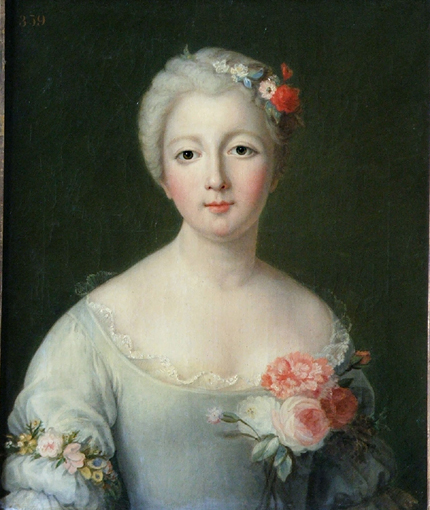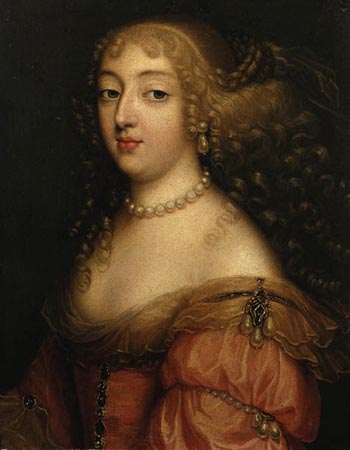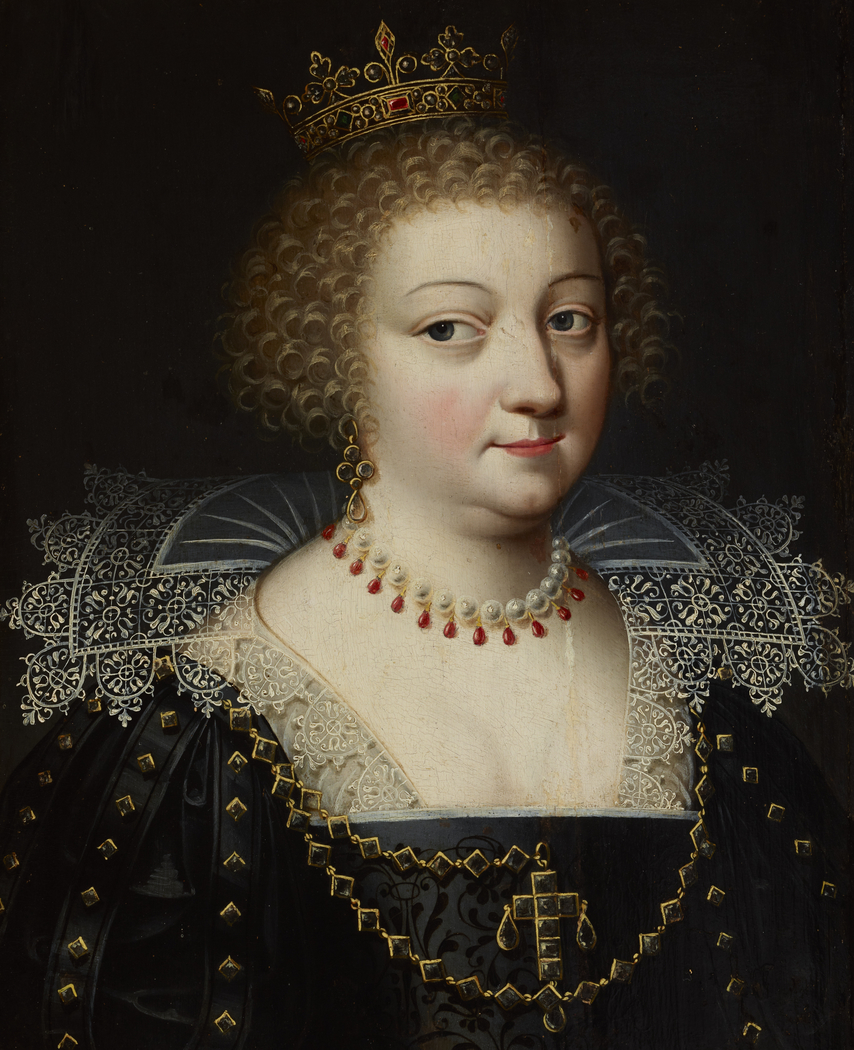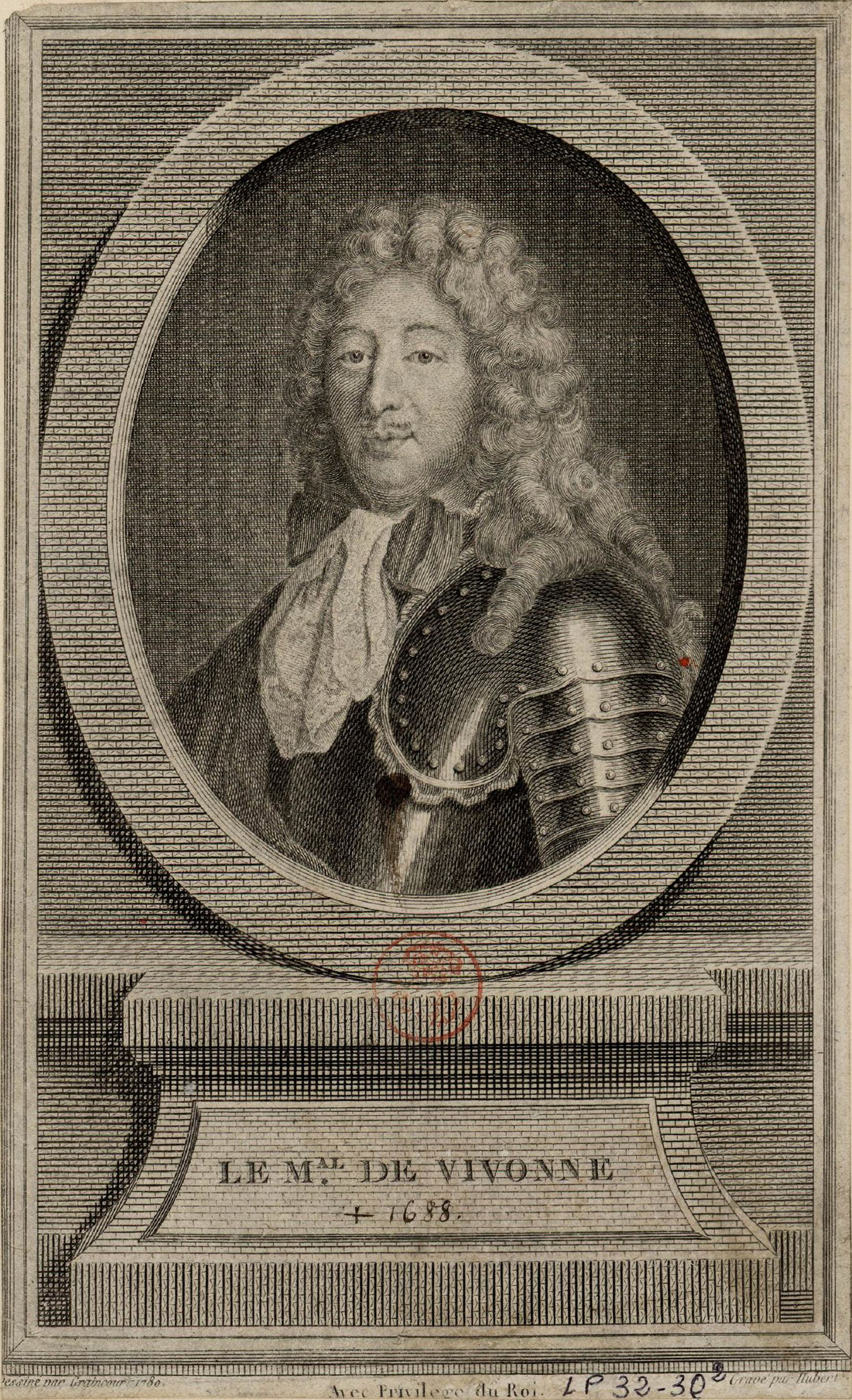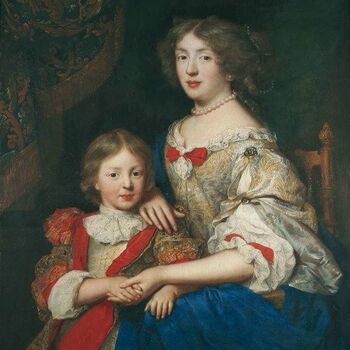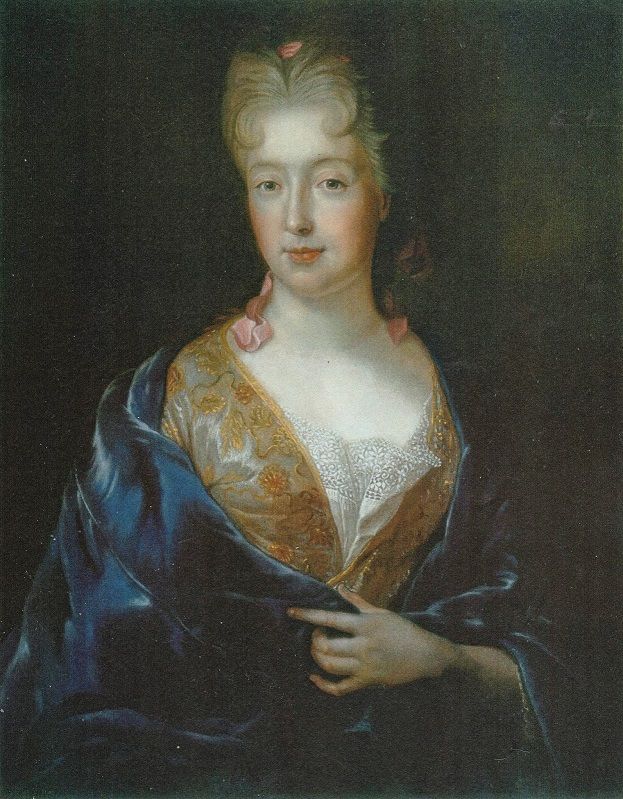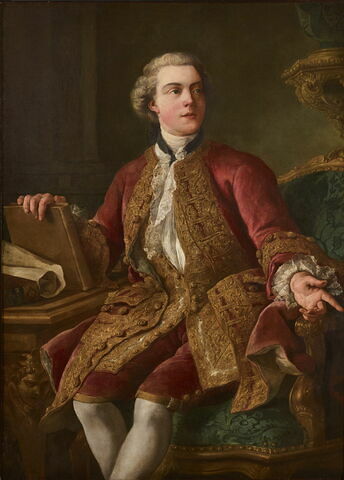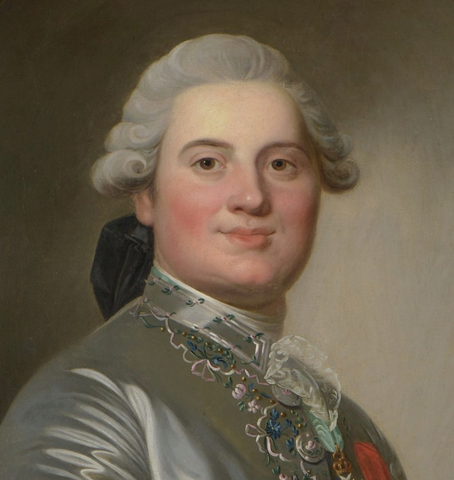Marie Leszczynska was the longest-serving queen consort of French history - she spent 42 years at the French court, gave the king ten children and enjoyed immense popularity from the people. Nevertheless, she remains a somewhat anonymous figure in the age of Versailles. Her reserved personality, dedication to duty and charitable disposition made her an ideal consort but not fit for neither courtly nor city gossip. As it happens, Marie Leszczynska managed to avoid any scandal during her entire tenure as queen of France.
The king's mistresses - particularly the sophisticated Madame de Pompadour and the scandalous Madame du Barry - tend to take center stage, pushing the devout Marie Leszczynska into the background. Later on, the reign of Marie Antoinette further pushed her predecessor into the background, albeit unintentionally. Whereas Marie Antoinette seemingly could do nothing right in the public's eye, Marie Leszczynska was admired and adored throughout her life.
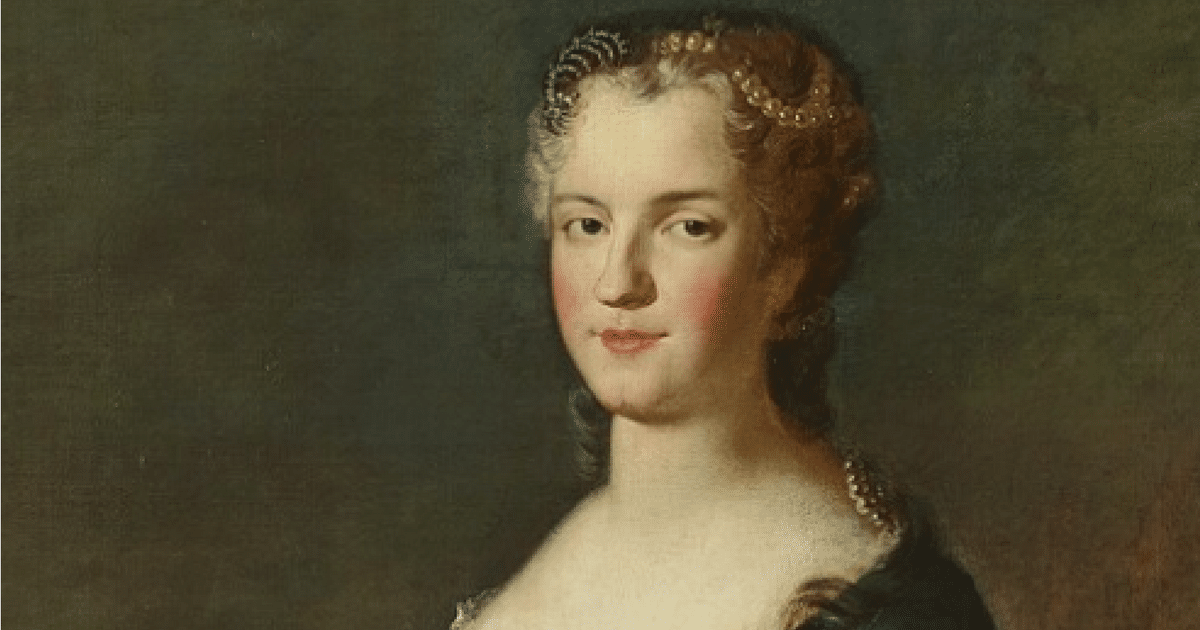
The question remains, what type of woman was the Polish-born queen? What did she like, what were her passions, her hobbies?
Traditionally, Marie Leszczynska has been described as a very religious woman which is certainly accurate. Even as Louis XV drifted further and further away from his religious duties, his wife delved into hers. Her private chambers were typically adorned with religious paintings (a total of 34 for her private apartment alone) - another great interest of hers. Throughout her life she would show particular fondness for the Virgin Mary - like her father had - and the devotion of the Sacred Heart.
While she is traditionally associated with the Dévot faction at court, she maintained a thoroughly neutral position politically. Whereas her children attempted to use their influence within this faction, she had learned her lesson from an ill-fated attempt at political maneuvering shortly after arriving at court. Perhaps this contributed to both her popularity with the people and the perception of her position as superfluous for the ambitious courtier. In comparison to i.e. Madame de Pompadour - whose political influence was both widely known and resented - the queen stayed clear of such dealings which helped keep her name out of less fortunate affairs. However, anyone who wished to advance themselves at court knew that they would gain nothing through the queen which left her somewhat abandoned - or rather, as abandoned as a monarch can be in an absolute monarchy.
Marie Leszczynska had a fascination with the Far East. Her interest developed and she would even dedicate a small room to "Chinese"-inspired décor in 1747; typically, this would be a rather romanticized version of the Far East, as told by stories. Her cabinet was redesigned in 1761 to form the so-called "Chinese cabinet" before being made into a library for Marie Antoinette.
Likewise, she was a collector of Japanese lacquer-ware, Chinese porcelain and painted on imported silks, the latter of which were hung in her little cabinet. Her taste spilled over into the other royal residences, including Fontainebleau where she had a cabinet in the chinoiserie-style delivered to in 1737.
Much like her husband, Marie Leszczynska was quite a reserved person. She enjoyed her privacy and would frequently retire to her small private apartment, either alone or with a few close friends. Typically, she would spent at least two hours here every morning. It was on her initiative that the queen's apartment was expanded by a private section - the inner apartment. Whereas she understood and accepted her role as one of the fixtures of the court, she allegedly truly became herself when surrounded by a few, close friends. Amongst these were the ducal pair of the duke and duchesse de Luynes with whom she often spent her evenings.
 |
| Marie as a young queen |
One characteristic that is rarely mentioned when discussing the queen is her taste for the arts. Paintings were a favourite of hers but music and literature were also amongst her interests. Interestingly, she seems to have arranged a small chamber to act as a tiny studio for herself; here, she was guided by the master Oudry himself. It is not difficult to draw parallels between her hobby and that of her husband's scientific pursuits or her grandson's lessons at the forge.
Music, too, played a massive part in her life. Both she and Louis XV were musically inclined - Marie Leszczynska more than her husband - and she ensured that all her daughters were proficient musicians. It was also not unheard of for her to request smaller concerts to be performed in her apartment. The concerts she hosted in her apartments were typically repeats of shows performed in Paris - which she rarely went to - or spiritual concerts. These were held in numerous different locations from the queen's own apartment to the Menagerie or the Salon of Peace and constituted a fixed point in court life; as such, she was a pivotal part of maintaining a musical atmosphere at court. The queen herself was proficient in three different instruments and would receive the young Mozart as a private guest.
She had a talent for linguistics, speaking six different languages (Polish, French, Latin, German, Italian and Swedish) and was generally given a very thorough education including mathematics, theology, sciences and the arts. This capacity for knowledge was something which she passed on to her daughters, particularly Madame Adélaide, who was said to have an insatiable thirst for knowledge. Marie Leszczynska herself maintained her own erudite pursuits; she read an enormous amount and was said to have had a good sense of humour.
 |
| Marie Leszczyńska, 1753 |
While Louis XV was a notoriously avid hunter, there is little to suggest that Marie Leszczynska had a similar interest in this royal pastime. Her position as the long-suffering wife a husband consorting with a string of mistresses, her public admiration also stemmed from her dedication to charity. She received remarkably little in allowance, much of which went directly to the poor. Amongst her personal campaigns was the so-called Queen's Convent which provided girls from poorer backgrounds with an education; this echoes the efforts of Madame de Maintenon's school of Saint-Cyr, except that Maintenon's efforts were concentrated on noble but impoverished girls with the end-goal of marrying them off decently.
Upon her death in 1768, the queen had established herself as one of the most popular royals in France. To the ancien regime, she was the ideal queen consort: she had fulfilled her primary duty of producing an heir (and eight princesses), devoted her time to charity and religion and stoically endured her husband's infidelities. Furthermore, her lack of political interference fit perfectly the ideal of the queen as been apolitical. Those were the characteristics that made Marie Leszczynska beloved by the people. They would have known little of her love of painting, of music, of intimate dinners with friends or her fascination with Asian culture. Her charity and duty made her a good queen; her talents, tastes and convictions made her a person.




